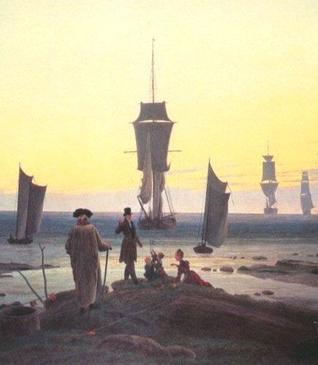Faith
The Stages of Human Life
by JASMINE KAUR
I sat there listening to kirtan at a housewarming.
I don‟t really remember what year it was and I do not remember whose house I was at. I was straining my ears to understand what the Bhai Sahib was rendering. I did not understand much, but sat there as I heard familiar vocabulary. Words that I had definitely heard in conversation before, and words that I had read before too, probably in the Guru Granth Sahib.
There was mention of milk (dudh), of brother (bhai) and of a sister-in-law (bhabi) and other words that I tried to make sense of. And then the Bhai Sahib stopped singing and started explaining.
He probably explained the entire shabad, but all I remember was that it had to do with the different stages of human life. And I only remembered that because at the time I was a student studying human development. I thought it was very cool that Guru Nanak was talking about human development in his bani.
On page 137 of the Guru Granth Sahib is where we find this bani.
According to Professor Sahib Singh, the compilation called Vaar Majh ki Tatha, Salok, a compiltion of pauris and saloks were revealed through Guru Nanak. Though the 27 pauris and saloks were revealed separately, Guru Arjan put them together when he compiled the Adi Granth.
Of course I did not know that when I first heard it during the kirtan. I had heard the first pauri at the kirtan and had related it to human development and didn‟t think of looking into it much until I began to work on this article.
Guru Nanak discusses ten different phases of life in this pauri.
In the first phase, the child lovingly gets attached to the mother‟s bosom for milk.
In the second period, the child comes to connect with the mother and father.
In the third he or she comes to recognize the siblings.
In the fourth phase, because of a new-found love of games, the child becomes exploratory.
In the fifth stage of life, the individual is consumed by the need for food and sustenance.
As the individual matures, he or she develops lust in the sixth phase.
Then in the seventh chapter of life, he or she focuses on collecting material things to create a peaceful and honorable living environment.
On the eighth leg of life, anger wells up which takes a toll on the body.
The hair turns gray and the body is weakened in the ninth segment.
Until finally, in the tenth, one passes on and is burnt.
Almost 500 years later, in 1950, Erik Erickson, a psychoanalyst whose work on human development is well known in the field of Education and Psychology, also discussed the stages of development in his first book "Childhood and Society‟. He discusses his eight stages, each in terms of two words or concepts working against each other. His first three stages, a focus on childhood from the ages of 0 to 5 years, are about "trust vs. mistrust‟, "autonomy vs. shame & doubt‟ and "initiative vs. guilt‟.
These stages incorporate attachment to parents, understanding of family and exploration through play. The next three stages cover the school-going child through young adulthood. The school/ child relationship now furthers with friends, school, teachers, and community.
In the adolescent stage and young adulthood, the individual‟s concern is on identity and intimacy where peer groups are developed and issues of intimacies focus on work and social life take shape. Erickson‟s last two stages talk of mid-adulthood and late-adulthood where the focus is children (the future), community, the world and the issues are about meaning and purpose and life achievements.
Though Erickson‟s psychosocial stages are similar to those of Guru Nanak's 500 years ago, Guru Sahib takes it a step forward for us to provide guidance and conclusion.
On that day when I first heard the discourse of Majh ki Vaar, I did not take the time to hear his message. All I could think was "Oh, that‟s so cool! Guru Nanak was talking about human development in his bani and I‟m studying human development at this time."
Now, after I make just a little bit effort into reading more about what Guru Nanak is actually saying, I seem to understand his message a little more clearly. After he paints the picture of the ten phases of life, he tells us not to waste our life just focusing on knowing this or getting stuck in the motion of being in a stage. He has given us the secret to life: not to follow our mind, but instead, to come into the sanctuary of Waheguru's grace so that we do not end up sinking in the sea of blind love full of materialism (a concept that we falsely think of as 'love') - [GGS:137].
[Jasmine Kaur is the Director of Education at the Sikh Research Institute. She has Bachelor's in Sociology and Elementary Education and has completed her Master's of Science in Human Development, with a specialty in Family Studies.]
June 5, 2010
Conversation about this article
1: Sangat Singh (Kuala Lumpur, Malaysia), June 05, 2010, 8:28 PM.
Jasmine ji, you were touched by the shabad that talked of our human journey. Who wouldn't? Guru Nanak's masterpiece encapsulates all the stages from hatching to dispatching poignantly and most beautifully in Sri Raag on GGS:74-76, starting with 'Pahilai pahrai rain ka vanjaaraai-aamitra hukam pai-i-aa garbaas' - "In the first watch of the night, O my merchant friend, you were cast into the womb by the Lord's command". The final stage at the end of the journey: 'Karh pakee kurh bhajai binsai aa-ay chalai ki-aa maan' - "When the crop of life has matured, it bends, breaks and perishes; why take pride in that which comes and goes". What matchless and incomparably beautiful imagery! Listening to this shabad would surely transport you to the very edge of the ultimate reality. But, in gurbani there is always a respite, that it was still not too late: 'Ki-o-naa har ko naan layhi moorak ni laaj ray/ raam bhat hee-ay aan chhaad dey tai man ko maan/ Nanak jan eh bakhaan jag mei biraaj ray' - [GGS:353.2] - "Why don't you chant the Name of the Lord, you shameless fool, let devotional worship of the Lord enter into your heart ad abandon the intellectualism of your mind. O servant Nanak, this is the way to live in the world." Shakespeare's most oft quoted passage, on the seven ages of man - infant, schoolboy, lover, soldier, justice, pantaloon and final stage, the second childhood sans teeth, sans eyes, sans taste, sans everything, pales as compared to the 'dhur ki bani' and that still presented a chance to remember Him.
2: Hirdesh Sahni (Bangalore, India), June 08, 2010, 9:49 PM.
Dear Jasmine, well written and concluded. An advice that we also get from the ten stages by Guru Nanak is that anger within us burns us. So, we should try to change what angers us, without allowing anger to linger, beyond the point it has made us realize what angers us.






